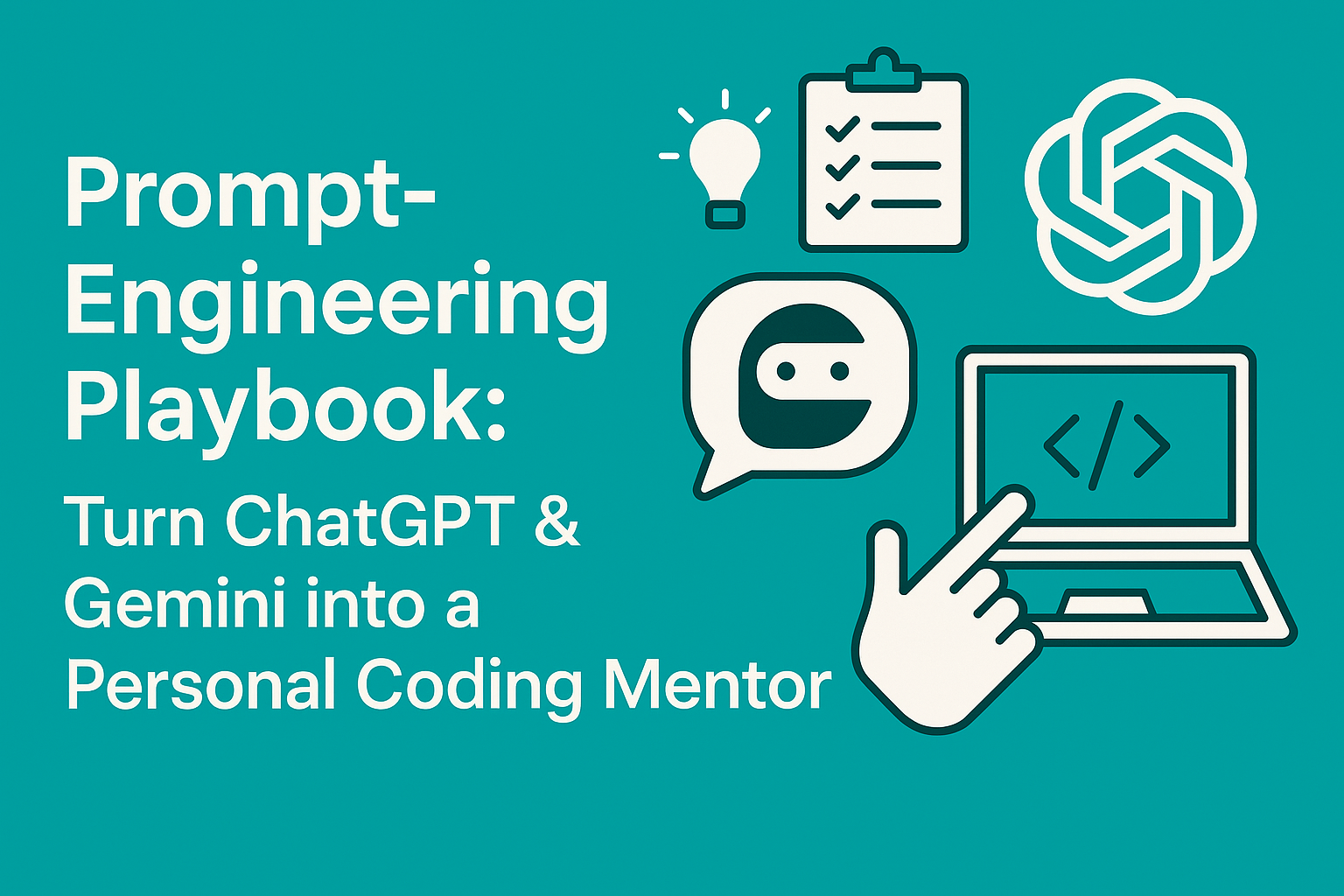Prompt engineering is quickly turning into the must-have super-power for developers, because it lets you squeeze pro-level answers out of AI tools like ChatGPT and Google Gemini in seconds. Job ads that mention “prompt engineer” have jumped more than 1,600 % in the past year, and salaries already sit between ₹52 lakh and ₹1.1 crore in India-adjusted terms. The good news? You don’t need a PhD to get started—you just need a repeatable playbook. This article gives you that playbook, plus mini challenges so you can turn each tip into a habit and make AI your personal coding mentor.
Why Prompt Engineering Matters in 2025
- Exploding demand: Analysts predict prompt-savvy roles will outpace many classic coding jobs by 2025.
- Faster learning: Studies show first-year CS students who use AI for bug-hunting level-up twice as fast.
- Portfolio booster: Employers now ask for an AI toolkit section on GitHub READMEs—prompt files count!
Keyword focus: prompt engineering course, prompt engineering salary, AI coding mentor, ChatGPT prompts, Gemini prompts.
1. Start with Clear Roles and Goals
A simple prompt like “Explain recursion” works, but a role prompt works better:
“You are a senior Python instructor. Explain recursion to a beginner in 150 words.”
Role prompting reduces “hallucinations” and sharpens tone.
Mini-challenge: Rewrite one homework question using a role prompt and compare outputs.
2. Use the “Instructions First, Data Later” Layout
OpenAI’s own docs show that models obey best when instructions sit above the data, separated by triple quotes.
Summarise the text in 3 bullets.
Text: """
…your paragraph…
"""
Gemini follows the same rule.
SEO keywords: prompt layout best practice, ChatGPT structure.
3. Break Big Tasks into a Prompt Chain
Instead of a 500-word mega-ask, split the job into steps: outline → write → polish. The Prompt Chaining technique boosts accuracy and keeps context limits in check.
Try it:
- Ask ChatGPT to list function names for a to-do app.
- Feed that list back, asking for doc-strings.
- Finally, ask it to write unit tests.
4. Show, Don’t Tell with Few-Shot Examples
Insert 1-3 tiny samples (“few-shot prompting”) and the model will mirror your style.
Translate to SQL:
User: “List all cities”
AI: SELECT city FROM places;
User: “Top 5 expensive products”
AI:
Mini-challenge: Feed Gemini two code-comment examples, then watch it continue.
5. Ask for Structured Output (JSON, CSV)
When your next project needs clean data, wrap your request like:
Return JSON with keys: function, time_complexity, explanation
LLMs can validate against JSON Schema, reducing post-prompt cleanup.
6. Iterate, Refine, Repeat
Prompt engineering is an agile loop: draft → test → tweak. Microsoft’s Azure guide recommends logging each version to see what small wording changes do.
Pro-tip: Save good prompts in a GitHub repo labeled “/prompts” to showcase your skill set.
7. Learn from Formal Courses (and Free Paths)
Coursera, DeepLearning.AI and even Google offer free or low-cost prompt-engineering courses with certificates you can show recruiters.
8. Make ChatGPT & Gemini Your Daily Pair-Programmers
- Morning stand-up: Ask, “What are common bugs in linked-list reversal?”
- Coding session: Use role + chain prompts to generate test cases.
- Review: Request a line-by-line critique of your commit message.
With practice, you’ll spend less time stuck and more time shipping features.
Next Steps: Challenge Yourself
- Build a Prompt Library: Add one new prompt a day for 30 days.
- Join the Conversation: Post your chains on r/PromptEngineering for feedback.
- Show it Off: Link your best prompts in your résumé—hiring managers love proof
Ready to turn these tips into a career advantage? Enroll in Code Impact Academy’s brand-new “Prompt Engineering Crash Course.” You’ll practice with ChatGPT, Gemini, and open-source LLMs, build a certified prompt portfolio, and meet recruiters who are already hunting for this fresh skill.
Become the engineer who knows how to talk to machines—and watch them code back for you.



